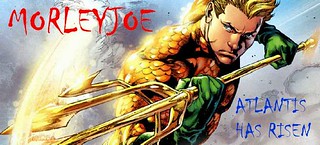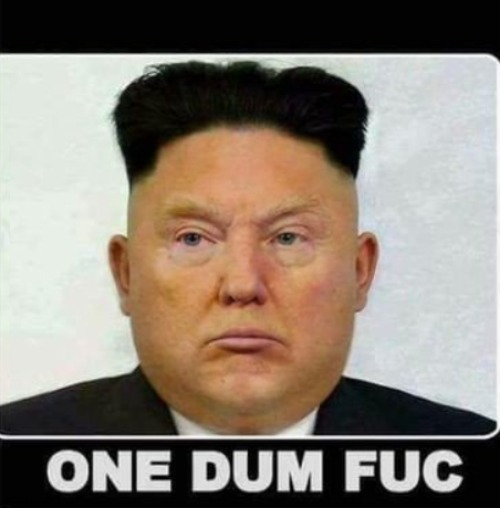- show: the history of nuclear war series
- History of Nuclear War I
-- explored the early days of nuclear research, from the discovery of elemental radioactivity in 1896 to the entry of the U.S. into WW II in 1941.
History of Nuclear War II
-- focused on the time from the entry of the U.S. into WW II in 1941 until the dropping of nuclear weapons on Hiroshima and Nagasaki.
History of Nuclear War III
-- covered the history of the Cold War.
History of Nuclear War IV
-- looked at current and future possibilities of nuclear war, now that the Cold War no longer dominates the political scene.
History of Nuclear War V
-- was a precise clone of History of Nuclear War IV, to accomodate people who had signed up for IV and hadn't gotten in.
History of Nuclear War VI
-- sunny version of HNW I
History of Nuclear War VII
-- sunny version of HNW II
History of Nuclear War VIII
-- sunny version of HNW III
History of Nuclear War IX
-- sunny version of HNW IV
History of Nuclear War GF
-- the eventual Grand Finale for the series.
Fog or Sun: In the first three tournaments, I had players vote on fog or sun. Most of the time the fog won, and sunny rounds were rare. In addition, it was a lot of work for me tallying the votes, and in fact a few times I tallied them wrong. After HNW III, a simpler system occurred to me. I would put out HNW IV as foggy with no vote, and then I would re-run the series as sunny. HNW V, however, was also foggy, because it was a clone of IV. The sunnies, therefore, are HNW VI, VII, VIII, and IX. The Grand Finale will have a combination, although the precise arrangement isn't set yet.
For more information on this series, visit the History of Nuclear War Series InfoCentre
Eligibility: To play in this tournament, you must be premium, have a turns-taken record of 98% or better, at least 100 completed games, and be at least a PFC on sign-up.
Procedure: In each tourney in this series, the first nine phases will consist of multiplayer Standard games. In each of these phases, only the first player eliminated from each game is eliminated from the tournament. All others will continue to the next phase. As soon as all games in a phase have had one player eliminated, I will begin the next phase with the survivors. Winning these games will not influence the course of the tournament; only that first elimination is significant.
In the Final phase, all remaining players will play simultaneously in nine multiplayer Terminator games. These games will be completed and winning them will count, as will the number of kills.
Settings: All games will be Automatic, 24-hour, Sequential, Chained, Sunny, Non-trench, with a 50-round limit. Maps will vary widely from phase to phase. Needless to say, spoils in all games will be Nuclear.
- show: Phase 1
- In 1896 Henri Becquerel first discovered radioactivity in uranium. Two year later Marie Curie proved that this phenomenon was not chemical in nature but proceeds from the structure of the atom itself. Curie and her husband Pierre went on to make numerous other discoveries in radiation physics. Marie and Pierre Curie and Henri Becquerel shared the Nobel Prize in Physics in 1906 for their work in radiation, and Marie was the sole recipient of another Nobel Prize, in Chemistry this time, for her discovery of two new elements along the way.
France was soon to be eclipsed by a flood of atomic research in England and Germany, but some crucial discoveries continued to be made there. In 1932 Irene Curie (Marie's daughter) and her husband Frederic Joliot were the first to artificially create radionuclides by nuclear fusion. In 1939 Francis Perrin and Lew Kowalski were the first to quantify the number of neutrons emitted in a fission reaction and prove the viability of a sustainable chain reaction.
Phase 1
40 players in 5 groups will play 8-player games on the France map. The first player eliminated in each game is out of the tournament. The remainder will go on to the next round.
- show: Phase 2
- After the work of Becquerel and the Curies, the leadership in atomic research passed to Ernest Rutherford. Rutherford's early work was done at McGill University in Canada with Frederick Soddy, but he soon moved to Manchester University in England. Today known as the father of atomic physics, Rutherford developed the planetary model of the atom, identified the differences between alpha, beta, and gamma particles, and discovered the proton. Rutherford was the first to observe a nuclear reaction, and his students Cockcroft and Walton were the first to create a fully artificial nuclear reaction. Other great physicists associated with Rutherford to some degree included George de Hevesy, Neils Bohr, and James Chadwick. Chadwick would go on to discover the neutron, which was the next step on the road to controlled fusion.
Phase 2
35 players in 5 groups will play 7-player games on the England map. The first player eliminated in each game is out of the tournament. The remainder will go on to the next round.
- show: Phase 3
- While practical work in atomic research was centred in England and France, the theoretical backbone of nuclear physics was being built in Germany. Max Planck, Walther Nernst, James Franck, Gustav Hertz, Wolfgang Pauli, Max von Laue and Erwin Shroedinger all made contributions to our theoretical understanding of the universe at the atomic level. The greatest breakthrough of all was Einsteins Special Theory of Relativity, and its inevitable result, the theory of mass-energy equivalence.
Phase 3
30 players in 5 groups will play 6-player games on the Germany map. The first player eliminated in each game is out of the tournament. The remainder will go on to the next round.
- show: Phase 4
- In 1923 Enrico Fermi of Italy was the first to point out that Einstein's mass-equivalence equation offered a source of energy that could be harnessed. Almost twenty years would pass before he could demonstrate this power, but the idea began to spread. Fermi also developed the first complete model of beta decay.
Phase 4
25 players in 5 groups will play 5-player games on the Italy map. The first player eliminated in each game is out of the tournament. The remainder will go on to the next round.
- show: Phase 5
- From 1934 to 1938 Otto Hahn, Lise Meitner, and Fritz Strassman bombarded uranium with neutrons, creating new elements which they mistakenly believed to be transuranic. Slowly but steadily they uncovered evidence that they were creating lighter elements instead, evidence which at first they could not believe. By December of 1938 the evidence had become irrefutable: Hahn and his team were forced to the conclusion that they had for the first time created nuclear fission, cleaving an atom into smaller atoms.
Phase 5
20 players in 4 groups will play 5-player games on the Germany map. The first player eliminated in each game is out of the tournament. The remainder will go on to the next round.
- show: Phase 6
- Only a few physicists understood the implications of Hahn's experiments, but these few were listended to. In less than a month German and American groups, informal at first, had assembled to study the idea of controlled fission. By the summer, British and French groups had also formed. At first these were all just academic, but soon the opening shots of world War II were being fired, and these groups gained official government backing. The German nuclear club became an organ of the government on Sept. 16th 1939, the American on Oct 21st, and the British on April 10th 1940 . The French group was overtaken by the rapid progress of the war and was absorbed into the British effort. The Russians didn't launch a nuclear research program until April of 1942.
Phase 6
16 players in 2 groups will play 8-player games on the WW II Europe map. The first player eliminated in each game is out of the tournament. The remainder will go on to the next round.
- show: Phase 7
- At the outbreak of the war, important players in nuclear research were in Scandinavia. Otto Hahn's key research partner, Lise Meitner, had fled to Stockholm. Neils Bohr, probably the world's foremost expert on atomic structure, was in Copenhagen. Heisenberg visited Bohr and made some effort to lure him to work in the German nuclear program, but it was probably half-hearted as Heisenberg himself was not completely sold on the idea. Eventually Bohr also escaped to Stockholm and later to the U.S., joining the Manhattan Project.
The biggest prize was the Vemork plant in Telemark, Norway, the only plant in the world producing heavy water in commercial quantities. The German government had already offered to buy the entire production of the plant when the French secret service beat them to the punch. The world's reserve of heavy water was smuggled to Paris, and when Paris fell, to Birmingham.
Captured by the Germans, the Vemork plant remained in production until several expeditions by Norwegian partisans, supported by the British Secret Service and the R.A.F., eventually succeeded in destroying it.
Phase 7
14 players in 2 groups will play 7-player games on the Nordic Nations map. The first player eliminated in each game is out of the tournament. The remainder will go on to the next round.
- show: Phase 8
- Leadership in atomic research was quickly passing from Europe to the United States. Much of the reason was Nazi racial policy: a huge percentage of the world's top atomic physicists were European Jews who fled from Germany or its satellites and eventually made it to Britain, Canada, or the U.S. While that factor alone would have shifted the forefront of atomic research, the production of a practical nuclear weapon was a huge commercial and industrial undertaking far more expensive than mere academic research. Getting the kind of massive funding the project required was not likely until the attack on Pearl Harbour officially brought the U.S. into the war.
Phase 8
12 players in 2 groups will play 6-player games on the Pearl Harbour map. The first player eliminated in each game is out of the tournament. The remainder will go on to the next round.
- show: Phase 9
- With the U.S. becoming a fully-committed participant in World War II, its incredible industrial capacity was soon harnessed to turn atomic fission from a laboratory experiment into a practical weapon. We will explore this further in the second tournament in this series. For now, we begin by just acknowledging the U.S.A.
Phase 9
10 players in 2 groups will play 5-player games on the USA map. The first player eliminated in each game is out of the tournament. The remainder will go on to the next round.
The finals will be different from the first nine phases.
- show: Phase 10 - Finals - The nuclear cataclysm
- Phase 10: The nuclear cataclysm
In the final round, the eight remaining players will face off simultaneously on all nine maps used in the tournament thus far. (The Germany map, which was used in two phases thus far, will therefore be played twice.) These games will be Terminator, and players will score 1 point for each kill and two extra points for winning a game. The player who scores the most points in the Cataclysm phase will win the tournament.
For more information on this series, visit the History of Nuclear War Series InfoCentre





























































 _Member__
_Member__
















































































